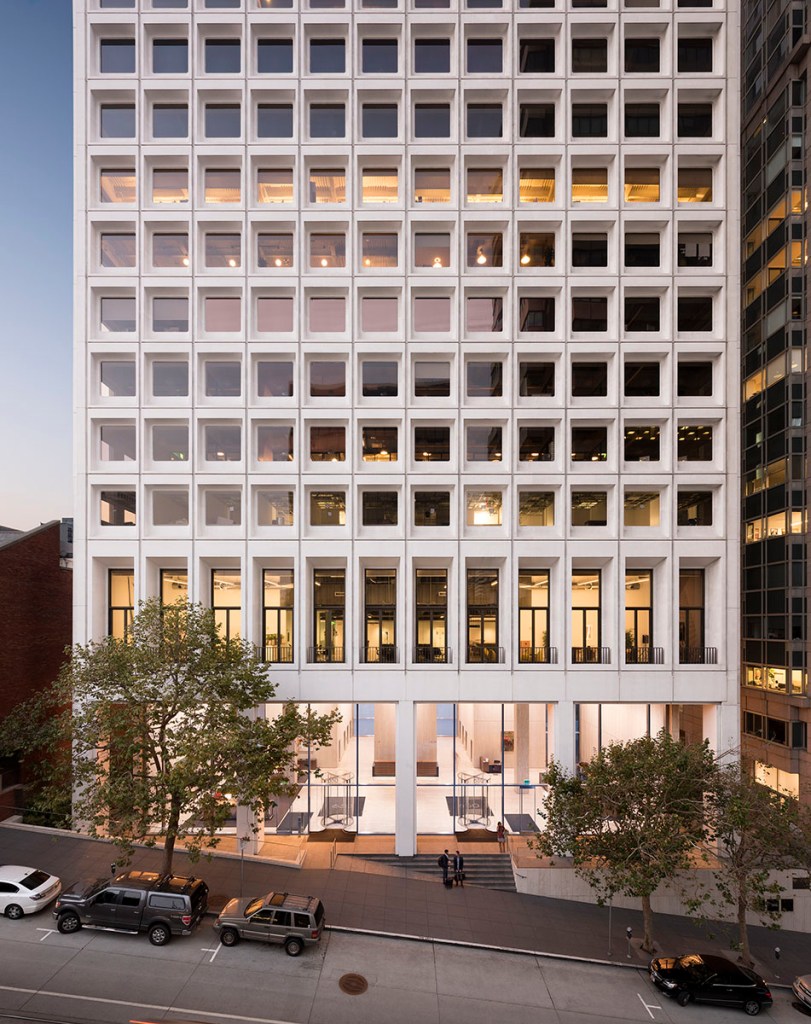How Office Stakeholders Are Coping With Maturing Loans, Looming Defaults
A tough refinancing market and an uncertain future are challenging owners and lenders.

Image by mediaphotos/iStockphotos.com
Remote work has outlived the social distancing, mask mandates and travel restrictions that the pandemic incited, and for many employers, getting employees back in the office has been an uphill climb. Vacant offices are inducing marked stress in the office lending environment, as landlords face maturing loans and few options to stave off delinquency.
READ ALSO: A Closer Look at Tech Layoffs’ Impact on Office Leasing
Widening CMBS spreads, paired with the Federal Reserve’s rapid interest rate hikes, are also furthering distress. Moody’s Analytics reports that 2023 CMBS conduit office loan maturities total more than $6 billion. Aside from the $938 million in delinquency or special servicing, another $1.92 billion worth of loans are at risk of delinquency this year.
Leading landlords under stress
By the end of the first quarter, some of the biggest office landlords were either delinquent or had already defaulted on their loans. Those owners included such heavyweights as Brookfield, Columbia Property Trust and RXR, which in early February returned two of its New York City office buildings to the lender.
In February, Brookfield stopped loan payments on two Los Angeles towers in the firm’s DTLA fund portfolio. The properties’ combined debt totaled $754 million, according to a February filing. The firm defaulted on another office portfolio in April. “Brookfield’s distress underscores the issues we are seeing in most major CBD office markets in the country,” said Jim Brooks, president of BH Properties, which is active in the acquisition of distressed properties.
Also in February, Columbia Property Trust defaulted on $1.72 billion in loans backed by seven office buildings in New York City, New Jersey, Boston and San Francisco. From January to February, the office delinquency rate climbed 55 basis points, reaching 2.38 percent, and then rose again to 2.61 percent in March, according to a Trepp report.
The recent collapse of two regional banks, followed by the bailout of a third and the takeover of global bank Credit Suisse, have ignited concern about the stability of the lending market, and with commercial lending severely reduced in the past several months, liquidity could be further challenged.
Occupancy yet to recover
Owners that are feeling the pressure can’t afford to wait it out. “Most tenants are on a five- to 10-year lease, and leases from 2019 are getting ready to come up,” observed Michael Thom, an attorney with Obermayer Rebmann Maxwell & Hippel. CEOs and city and state leaders are pushing employees to return to the office, particularly in downtown areas. “Despite everybody’s mandates, I have yet to see it really play out,” said Brooks.
Although office occupancy has improved compared to the depths of the pandemic, it is unlikely to return to pre-pandemic levels. One telling indicator is Kastle Systems’ Back to Work Barometer, which analyzes access card swipes in office buildings in 10 large cities, including New York City, Chicago, Los Angeles and Dallas. In January, average occupancy exceeded 50 percent, the highest rate since before the pandemic. By April, however, occupancy had slipped to 46.3 percent. And as Cushman & Wakefield predicts in a February report, office density will decline from 190 square feet per worker to 165 square feet over the next eight years. These trends all point to a sobering long-term climate for office owners.
A preliminary Moody’s analysis pegs the first-quarter office vacancy rate at 19 percent, noting that the sector is approaching peak vacancy. And projections indicate this rate will only dip slightly in 2024, to 18.8 percent.
So where does this leave owners? “It very much depends on the lender,” noted Darin Mellott, senior director of capital markets research for CBRE, adding, “Most are willing to take a flexible approach. Some are requiring more equity to be put back into the properties.” Working with owners could also take the form of loan extensions or restructuring, both of which are expensive for borrowers.
Few good options
Losing a big tenant can put a major dent in a building’s rent roll, undermining NOI and stressing the debt-service coverage ratio. “If I know tenant A is leaving, I need to be talking with my lender so they aren’t blindsided. Or they’ll be sending letters that I’m in technical default,” said Thom.
There was a time when owners could offer concessions to encourage tenants to sign or renew their leases, but these strategies pack less punch amid the overwhelming shift to hybrid- and remote-work models. This goodwill is also “disproportionately difficult on the landlord,” noted Joe Learner, chairman of North American brokerage at Savills.
Refinancing is an option, but with high interest rates and blurry valuations for buildings with lower occupancy, it’s become less viable for both owners and lenders. At its March policy meeting, the Fed raised the interest rate by another 25 basis points, continuing the steady cycle of increases over the past year. “These loans were taken out in a different rate environment. Even if a building is above ground, an owner still has to ask: ‘Is there equity in the building if my interest rate doubles?’” said Learner.
There’s also uncertainty on the lender’s part if tenants are reducing their footprints or vacating altogether. “Banks will eventually be under pressure to enforce their covenants with their borrowers. We’re just getting to the tipping point as to where that plays out,” predicted BH Properties’ Brooks.
Chinks in value armor
Newer, more amenitized product is more competitive, and therefore, faces fewer headwinds than older stock. “We’ve seen the bulk of problems concentrated in Class B office,” said Mellott. Results from CBRE’s Office Occupier Survey indicate that employees value office location and ease of commute the most. “The high end of the market is likely to be resilient as many new trophy properties have low vacancies and are achieving high rents,” he added.
Under the right conditions, one option for that is conversion to residential use. At the high end, showcase examples of high-end makeovers include One Wall Street, an Art Deco landmark in downtown Manhattan. Macklowe Properties converted the onetime headquarters of Irving Trust Co. into 566 condominiums. In Salt Lake City, Hines is planning to convert the 217,000-square-foot South Temple Tower into 255 luxury units.
The trend could be a strategy beyond the luxury market. In January, a New York City task force recommended regulatory changes that would add 136 million square feet of office space to the inventory covered by the city’s most flexible conversion regulations.
The majority of office conversion projects studied for a recent report from the Urban Land Institute and the National Multifamily Housing Council were of Class B and Class C office properties. “Broadly, and perhaps self-evidently, it is clear from our interviewees that conversions can be financially feasible in a broad range of markets, original uses, building conditions and circumstances,” the study concluded. Another key finding: Occupancy when the property is acquired is not necessarily an impediment, nor is vacancy a requirement.
Investors are also watching property valuations when considering where to do business because “nobody’s really clear on what an office property is worth today,” Brooks said. “You could fall in love with a building that has no money. The deal you thought you had is probably not the deal you thought you were going to get,” said Learner.
Low confidence in the office sector’s performance means lenders are reluctant to finance these properties, but high-quality borrowers may struggle less to get capital. “Eighty-six percent of lenders in our survey expect to underwrite more conservatively this year, and lending standards will continue to evolve as conditions change,” noted Mellott.
Even if an owner can sell, it may only be able to cover the debt, which means taking a loss. Blackstone recently sold two Santa Ana, Calif., office buildings at a $47 million loss, as reported by Bisnow. The firm purchased the property from Lincoln Property Co. for $129 million.
“We expect to see more distress surfacing as we move through the year,” said Mellott, though he doesn’t expect upcoming loan maturities to fundamentally impact financial stability in the U.S.

















You must be logged in to post a comment.